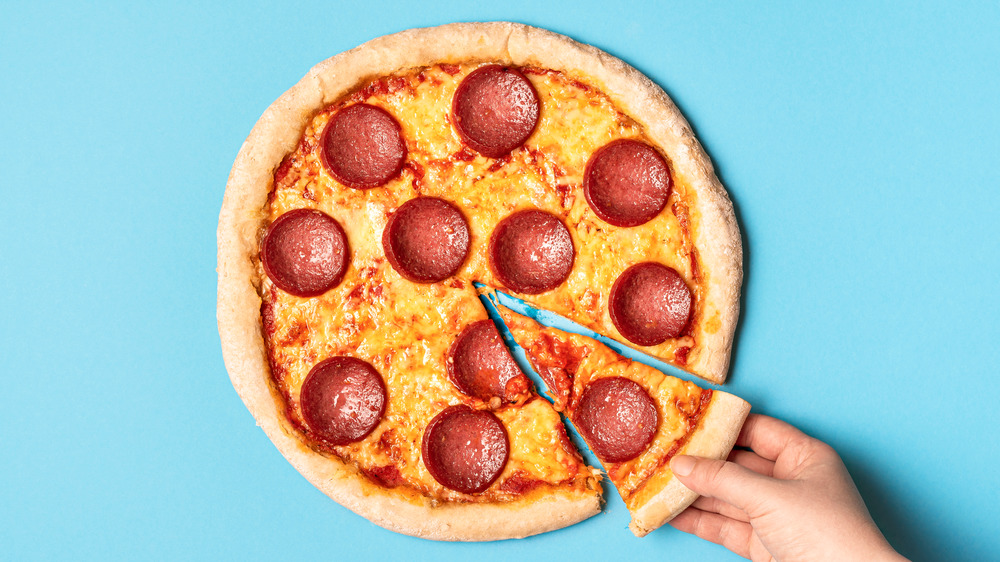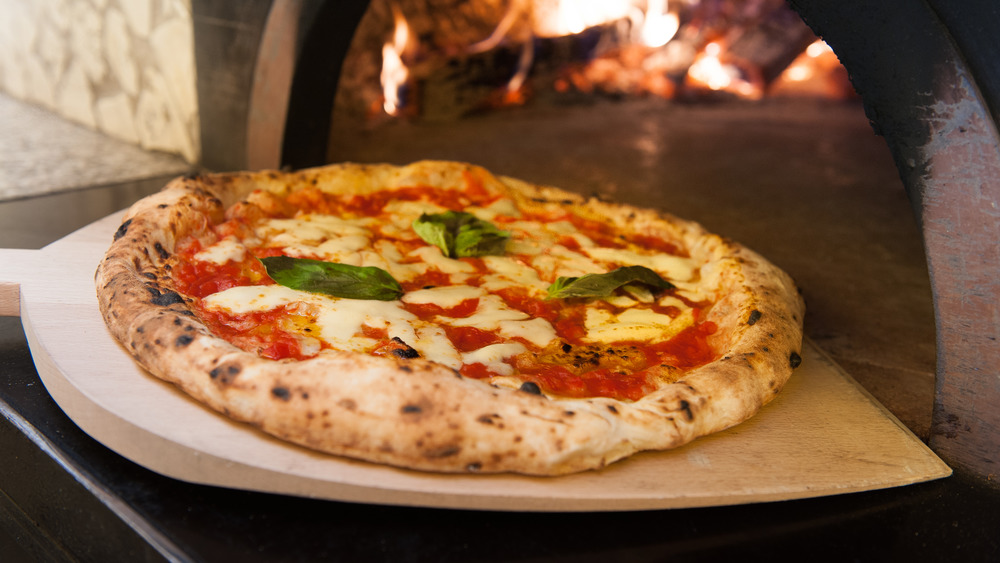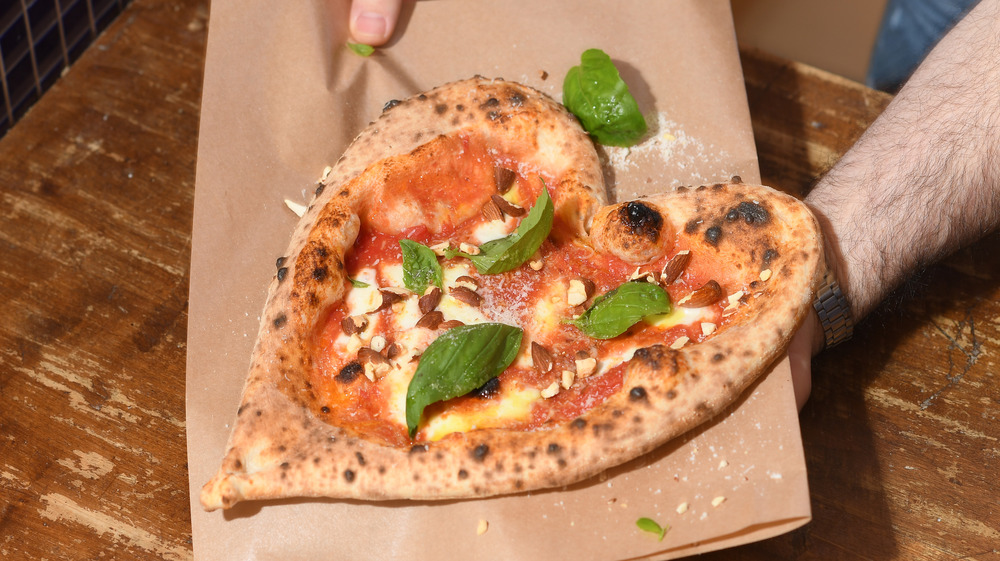The Truth About The Pizza Diet
Pizza and diet. Those aren't two words that you would expect to see together — unless, of course, the sentence goes something like, "You can't go near pizza on your diet."
But for a few people, this conventional wisdom didn't hold true and they were, understandably, eager to tell people about it. After all, who can resist an eating plan centered on pizza? It's like something out of a dream, or an upside-down world where pizza is healthy. And that raises the question: How did they do it? How did three people center their eating habits on pizza and end up losing weight?
As tempting as it is to take the pizza diet as a miracle, a deeper look reveals that it's the details around the diet that make the difference, not some magic property specific to pizza.
Take Pasquale Cozzolino, for example. He wrote the book on the pizza diet, literally. And though his website doesn't give away all the secrets in his book, it does make one thing clear. His pizzas are not like the pizzas you're going to get from a major chain. His crust contains only yeast, salt, water, and a simple wheat flour. Pizza Hut crust, for comparison, contains enriched wheat flour, water, yeast, soybean oil, salt, vital wheat gluten, datem, sugar, ascorbic acid, sucralose, and the spray oil from the pan, according to the company's website.
It's all about the details
All of those extra ingredients bring added interactions and some, like the sugar, add in a hit of calories. When you add in the toppings, that calorie count climbs even higher. Cozzolino's simple Neapolitan pies topped with tomatoes, basil, a little oil, and only a few ounces of mozzarella seem almost lean in comparison.
Matt McClellan is another pizza diet advocate that is not shy about the importance of specifics. He is probably best known for biking from Florida to New York City to promote the pizza diet. But as he discussed with GQ, it wasn't just about the diet. "I'm in an industry where it's really easy to get picked on by nutritionists and doctors who always want to target our industry to make a quick buck," he said.
McClellan isn't wrong. Pizza is generally considered junk food, and for good reason. One slice of a hand-tossed Domino's pizza with pepperoni and regular cheese comes out to 200 calories. Of course, it comes with 8 grams of protein, but it also delivers a whopping 360 milligrams of sodium and 22 grams of carbs, per the nutrition calculator on the Domino's website.
More a lesson than a diet plan
But as with Cozzolino, McClellan isn't advocating that people go out and order pizza from a convenience chain for every meal.
"Our industry is mostly independent, family-owned businesses," McClellan said in his GQ interview. And it is these kind of small, independent places that Cosmo writer Charlotte Palermino ordered from when she tried a pizza cleanse in 2015. Palermino ate nothing but pizza for a week with a careful emphasis on giving up sugar and alcohol as well. By the end of it, she had lost 5 pounds.
But as Palermino pointed out, it wasn't just the pizza. She was eating fewer calories overall compared to normal. And that was, in part, because of which pizzas she was eating. Usually heavy on the vegetables and sparse on cheese, she opted for artisanal pizzas from around New York City, over the easily-delivered delights most Americans first think of when they think about pizza. McClellan, a pizza chef himself, took a similar approach. He tailored his toppings to make sure he got the right nutrients without heaping on unnecessary calories, all of it on crusts he made from simple ingredients.
The pizza diet isn't a miracle diet. You can't swing into a Little Caesars every time you get hungry and still lose weight. The diet does, however, highlight the importance of the details. What ingredients go into your food? How do those ingredients affect you? It's not a diet most people can live off of, but it does teach a lesson we can all use.



